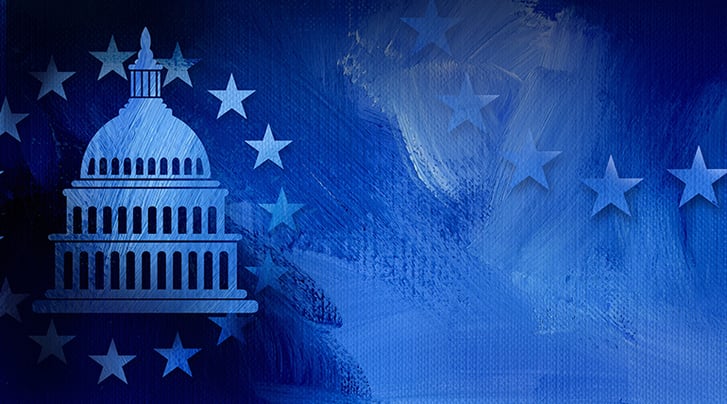
On June 5, 2020, the President signed into law the Paycheck Protection Program Flexibility Act of 2020 (“PPPFA” or “Flexibility Act”), which amends certain provisions of the Paycheck Protection Program (“PPP”) that were proving problematic for small businesses in need of aid as a result of COVID-19.
Specifically, the Flexibility Act loosens restrictions placed on the loan forgiveness aspect of the PPP and allows loan forgiveness recipients to defer their payroll taxes. Certain portions of the PPPFA, however, only apply to loans issued after its enactment, so it’s important to pay attention to the applicability of each amendment.
On June 11, 2020, the Small Business Administration issued an Interim Final Rule interpreting the newly enacted legislation.
Below highlights the major changes to the PPP as a result of the Flexibility Act and the most recent Interim Final Rule.
1. Softening of Spending RequirementsPreviously, the PPP required businesses to spend 75% of the loan proceeds on payroll. The Flexibility Act reduces this amount to 60%, which means you’re now able to spend up to 40% on other eligible business expenses, such as any payment on a covered utility, mortgage or rent obligation.
The SBA reads the Flexibility Act requirement as a proportional limit on nonpayroll costs as a share of a borrower’s loan forgiveness amount instead of a threshold for receiving any loan forgiveness. It provides the following example in its Interim Final Rule:
“If a borrower receives a $100,000 PPP loan, and during the covered period the borrower spends $54,000 (or 54 percent) of its loan on payroll costs, then because the borrower used less than 60 percent of its loan on payroll costs, the maximum amount of loan forgiveness the borrower may receive is $90,000 (with $54,000 in payroll costs constituting 60 percent of the forgiveness amount and $36,000 in non-payroll costs constituting 40 percent of the forgiveness amount).”
Applicability: all PPP loans, both issued before and after the PPPFA became law.
2. Lengthening of Covered Periods
Pursuant to the PPPFA, the term “covered period,” or period in which to use borrowed funds, is revised to span from February 15, 2020 through December 31, 2020, rather than the initial cutoff date of June 30, 2020.
Similarly, the eligibility period for loan forgiveness is no longer limited to 8 weeks after getting a PPP loan, but extended to commence on origination and end the earlier of: (1) December 31, 2020; or (2) the 24-week period after the loan is obtained.
Nevertheless, the Flexibility Act provides that you can still elect to abide by the original 8-week period if you anticipate that the longer period could have negative implications on your firm.
Applicability: all PPP loans, both issued before and after the PPPFA became law.
3. Protecting of Businesses Unable to Immediately Return to NormalUnder the original version of the PPP, the amount of loan forgiveness would be reduced based on any decrease in your full-time equivalent employees.
Now, during the covered period, the amount of loan forgiveness will be determined without a proportional reduction in the number of full-time equivalent employees if you, in good faith, can document—
- (i) an inability to hire back employees who were with your business on February 15, 2020, and (ii) an inability to hire similarly qualified employees for unfilled positions on or before December 31, 2020; or
- an inability to return to the same level of business activity as you were operating at before February 15, 2020, due to compliance requirements established or guidance issued by the Secretary of Health and Human Services, the Director of the Centers for Disease Control and Prevention, or the Occupational Safety and Health Administration, during the period beginning on March 1, 2020, and ending December 31, 2020 related to safety or health standards in light of the COVID-19 pandemic.
Applicability: all PPP loans, both issued before and after the PPPFA became law.
4. Extending Loan MaturityThe Flexibility Act extends the term for PPP loans with a remaining balance after loan forgiveness from two years to five years.
Applicability: only those loans made on or after the effective date of the PPPFA (June 5, 2020); however, businesses with previously issued loans can mutually agree with their lender to take advantage of the new five-year period.
5. Increasing the Deferral PeriodThe Flexibility Act also provides for the deferral of repayment of principal, interest and fees—not for a 6 to 12-month period—but rather, until the date on which your determined loan forgiveness amount is remitted to your lender (or notifies your lender that no loan forgiveness is allowed).
If you fail to apply for loan forgiveness within 10 months after the last day of the covered period, then you’re required to start making payments on your loan beginning the day your 10-month period expires.
The example the SBA provides in its Interim Rule is as follows:
“[I]f a borrower’s PPP loan is disbursed on June 25, 2020, the 24-week period ends on December 10, 2020. If the borrower does not submit a loan forgiveness application to its lender by October 10, 2021, the borrower must begin making payments on or after October 10, 2021.”
Applicability: all PPP loans, both issued before and after the PPPFA became law.
6. Deleting a Payroll Tax ExceptionThe Flexibility Act changes the prior law in that it permits the deferral of qualified social security taxes both before and after the date of loan forgiveness of the PPP loan.
Applicability: all PPP loans, both issued before and after the PPPFA became law.
Keep in mind that the rules and regulations governing PPP loans are continually changing and evolving. For instance, the SBA has stated it will be issuing revisions to its interim final rules on loan forgiveness and loan review procedures to address amendments the Flexibility Act, as well as additional guidance on other aspects of PPP loans.




